Commemorating 100 Years
RACINE PUBLIC LIBRARY
A CENTENNIAL OF HISTORY
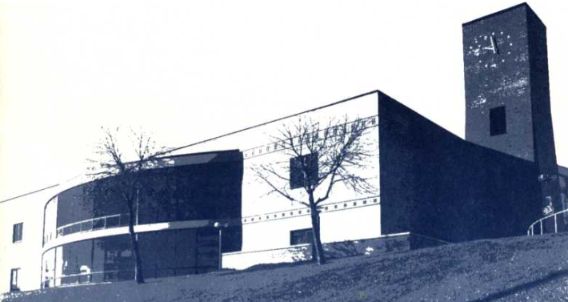
COMMEMORATIVE HISTORY
This commemorative history of the Racine
Public Library is dedicated to our community, whose
members have supported their public library so generously
and effectively for the past one hundred years (and then some).
1897-1997
1897-1997
RACINE PUBLIC LIBRARY
CENTENNIAL
From the address of the Honorable Peter B. Nelson at the dedication of
the Racine Public Library, Sept. 9, 1897 —
“Ladies and Gentlemen:
The city of Racine holds a public reception this evening and invites thereto every man and woman, every girl and boy, within its border, to meet the most learned of all nations, to greet the most delightful storytellers and to
listen to them relate their experiences and express their thoughts…and not only enchant but improve the minds of all who grasp this
golden opportunity…
So it seems to me that as we enter the door of our public library, we should feel that we were upon hallowed ground….This should indeed in every sense of the word be a “public” library. Here there can be no distinctions. No class, no creed, can prevent any person who so desires, meeting either king or nobleman, statesman or philosopher, poet or critic….Here has been established the university of the city of Racine. It is the keystone of our public school system, and if by force of circumstances a young man or girl is prevented from continuing his or her education in the public schools, nothing will prevent him from [here] continuing that true education which
will fit him for life work and render more enjoyable the years that are to come.”
To the Reader
The objective of the Centennial Committee on Library History was to write a brief
history of the Racine Public Library in celebration of its centennial year. As we
at the Racine Public Library sorted through the mass of information, historical
documents, ephemera and other fragments of memories from this institution’s
last 100 years, we were confronted with a great choice at every turn of the page.
Our perhaps paradoxical goal was to include all the people, events, and services that had an impact on the library’s growth and development over the years, and, at the same time, produce a modest, pamphlet-sized commemorative within the scope of our budget. In the end, we chose to prepare a timeline that highlights the cooperation between the library and the community it served, from its earliest beginnings to its 100th anniversary. It is this unflagging spirit of cooperation between the public library and Racine-area citizens that has been important — even necessary — to establishing the progress the Racine Public Library has achieved during its first century.
Through the years, concerned citizens have shared a common belief: that the public library and its services are necessary ingredients in our community and quality of life, and that all citizens are entitled to enjoy the pursuit of lifelong learning. With their contributions of time, talent, and money, local citizens have helped make the Racine Public Library an institution that the Honorable Peter B. Nelson in 1897 declared to be “the university of the city of Racine.”
In this timeline, we salute the people whose determination and support first brought the library into being as a public institution in Racine. We proudly highlight the Racine Public Library’s pioneering of innovative services which have since been widely adopted by other public libraries, and we laud the unwavering concern our citizens have demonstrated and the action they have taken, collectively and individually, to cultivate their library.
Our task completed and shared with you here, we urge you not only to celebrate the past,
but also to look to the future — a future in which the Racine Public Library and its community will
continue the successful traditions of its past, using the developing technologies of the present.
— Centennial Committee on Library History
Racine Public Library
Racine, Wisconsin
1997
1895
Citizens Help Establish a Free Public Library in Racine
One of the charter purposes of the Woman’s Club of Racine was to help establish a free public library. In 1895, a group of citizens spearheaded by the Woman’s Club organized a Library Association for this very purpose. Due in large part to the untiring efforts of these citizens over the next two years, the Racine City Council passed a resolution to levy a $250,000 tax for library support. Subsequently, a nine-member library board was appointed. With funding, however small, and a governing body, the establishment of a public library was underway.
The Woman’s Club’s efforts in helping the public library became a tradition that continued over the course of the next hundred years. In addition to the Woman’s Club, many other civic organizations, such as the Junior League of Racine, Racine Children’s Theatre, Junior Chamber of Commerce and the Rotary Club have made unselfish, significant contributions of time, labor and money to the Racine Public Library throughout its history.
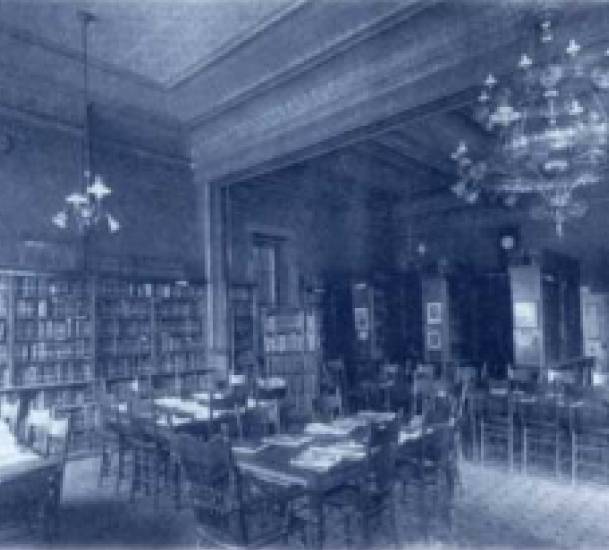
The Racine Public Library opened its doors in 1897, in rented quarters at 245 Main Street.
Racine Public Library Opens Its Doors
On the afternoon and evening of Thursday, Sept. 9, 1897, about a thousand of the 30,000 adults and children who lived in Racine crowded into the city’s first free, public library. The procession arrived both before and after a formal dedication ceremony at City Hall, which was then just across the street. The new library was on the ground floor of the McClurg building — now Main Place — located downtown on 245 Main Street at the corner of Third and Main, in a block owned at the time by M. M. Secor. There was only one room — but what a room! It was finely fitted with multi-colored ceramic tile on the floor, marble-paneled wainscotting and embossed “iron” walls above, and topped overall by a patterned, tin ceiling, from the center of which a magnificent chandelier hung, resplendent with 52 globes in gleaming glass shades. Nearly four thousand books in cases and nooks surrounded the central reading area.
The Racine Public Library was the proud achievement of civic efforts worthy of celebration then and commemoration today. This elegant little reading room was only the first of many such achievements to recount in our library’s history.
Children’s Reading Rooms and Storytimes Flourish from the Start
It was in 1898 that the Philanthropic Committee of the Woman’s Club came to the aid of the public library by opening two Saturday afternoon reading rooms for children, one at the Racine Junction on Ann Street, in the former Presbyterian Sunday School rental library, and the other on North Wisconsin Street. To stock the reading rooms with children’s reading material, the committee collected 273 books and 3,490 magazines from Woman’s Club members. They placed the most suitable items in the reading rooms and circulated them to the 3,225 children who were enrolled.
The philanthropy of the Woman’s Club continued through the years, donating accelerating amounts of reading materials to accommodate the ever-increasing volume of library use. By 1900, the total number of school-age children enrolled in children’s storytimes was 664 — more than double the number in 1898. Total annual attendance in 1900 at children’s programs was 4,846, while the total number of books checked out was 4,114. Operating expenses — excluding money paid for new books — amounted to a mere 2.5 cents per afternoon, per child.
1898
Increasing Public Access to Government Documents
The Racine Public Library, newly designated as a depository for publications of the United States government, began receiving free, weekly shipments of federal documents in 1898. In later years, the library also became a regional depository for publications of the state of Wisconsin. Understandably, public access to the information available in government documents is of tremendous benefit to the community. Today, the Racine Public Library remains a depository for government documents, with more than 95,000 federal, state and local government publications in its collections available to the public.
1901
Library Seeks Funding for New Building
With the library’s rapid growth, its single rented room in the McClurg Building soon became overcrowded, so the library board sought funding for the construction of a new building with larger quarters. With much hard work and some good fortune, this goal would be achieved.
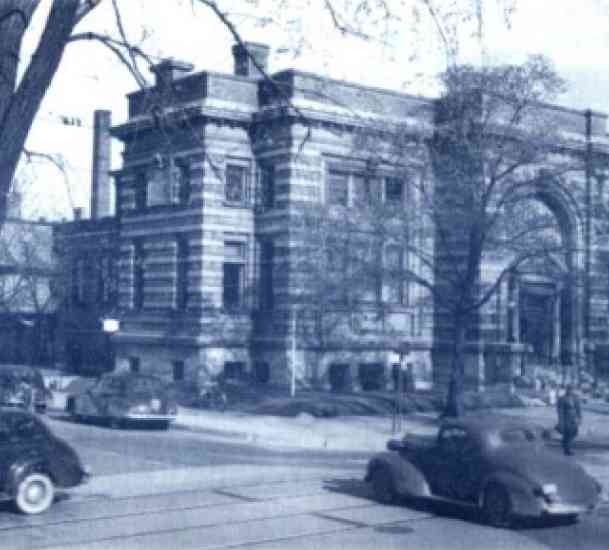
The first Carnegie library building in Racine opened in 1904 at 701 South Main Street.
First Carnegie Library in Racine Opens
Racine citizens braved blustery winds and a foot of snow for three days in the middle of March 1904 to marvel at the beauty of their new library building, before even a single book was allowed to be checked out of it. A grant of $50,000 from Andrew Carnegie funded the beautiful new building. Carnegie, initially a multi millionaire and steel tycoon from Pittsburgh, became a philanthropist in his later years to finance libraries throughout the nation during the late 1800s and early 1900s. The new building’s architect was John L. Mauran from St. Louis, who designed the building in the Renaissance Revival style and ornamented it in molded terra cotta. The Western Library Association labeled this construction “the Library Beautiful,” and the name stuck. The Library Beautiful served as Racine’s central library for 54 years and still stands at 701 South Main Street, the corner of Seventh and Main Streets. Now the home of the Racine Heritage Museum, its elegant twin fireplaces, classical Ionic columns, coffered plaster ceilings and gracious wooden staircases provide an illustrious accent to the other records of our city’s past.
1904
Library Reaches Out to the Community: Extension Services Begin
After the Racine Public Library’s 1904 re-opening in its first Carnegie building, one of its first goals was to expand and extend its services throughout the community. The Library Extension Department began to service our local public schools by placing book collections in Howell, Washington, and Lincoln Schools. It also starting a deposit collection of 35 books which were loaned to the Life Saving Station (later the Coast Guard Station). In 1910, library extension services expanded to provide books to factories, hospitals and fire stations.
The Northside Branch was opened in 1906 in the Northside Boys’ Club to bring the resources of the library to people living away from the center of the city. This branch served the public until 1922, when the Washington Branch, which served both the school and the general public, was opened in Washington Junior High School. During this time, other branches were also established to meet the needs of the central, west, and southside residents. A Central Branch was started in Lincoln School and later transferred to the Central Association (in later years known as Family Service of Racine), where it continued to serve the public until 1921.
Today, the Racine Public Library continues to meet our community’s needs by placing outreach collections of library materials at city of Racine fire stations; seven community centers; senior citizen centers and nursing homes; the Racine County jail. Detention Center, and jury Room; Vision House; the Love and Charity Mission; St. Mary’s Medical Center Inpatient Rehabilitation Center; and the Women’s Resource Center.
1910
Library Hires First Reference Librarian
Although the library had been providing reference service to the public since it opened its doors in 1897, the first “official” reference librarian was hired in 1910.
1914
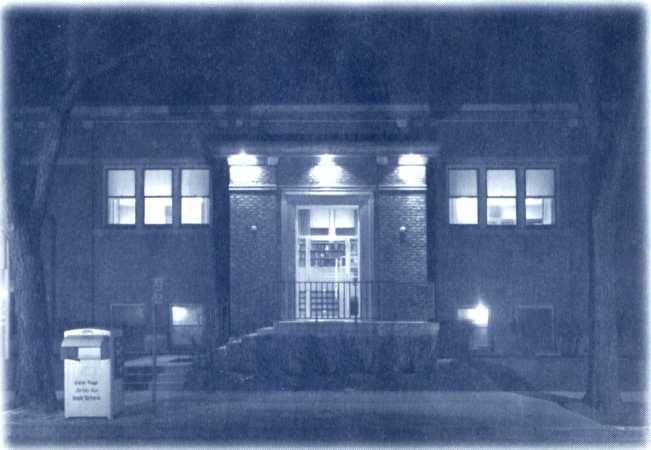
Second Carnegie Library in Racine:
Junction Branch Opens
On a balmy Memorial Day in 1914, the Racine Junction Advancement Association dedicated a branch library at Washington and Hamilton near the Racine junction, financed by a Carnegie grant of $10,000. The junction Branch (later called South Branch, and then Uptown Branch) was designed by the local architectural firm of Guilbert and Funston. One of the few public buildings in Racine constructed in the Prairie style, so indigenous to the Middle West, it served as a branch library for 74 years. Although it is now privately owned, the building still stands, in Uptown, at Washington Avenue and South Memorial Drive. Racine was one of only a few communities in the United States (58 out of some 1,420) to receive a Carnegie grant for more than one library building.
1922
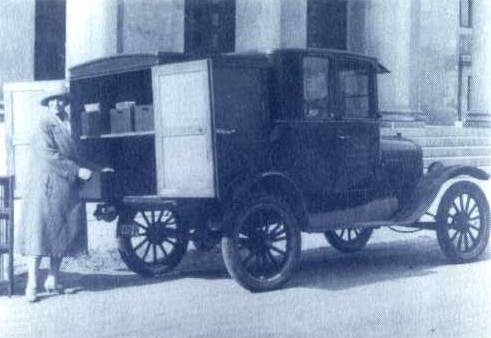
Library Branches Out Across Town-and Around the County
1922 saw the opening of branch libraries in Franklin and McKinley Junior High Schools, in addition to the newly opened branch in Washington junior High School. When the new Fratt School was planned in 1925, a provision was made to house a library to serve both the school population and general public. Branches were also established in the newly built Horlick High and Mitchell junior High Schools. Today, the school district provides libraries at all public elementary and secondary schools to serve children from kindergarten through twelfth grade. Still, students find the materials and services provided by the public library an invaluable resource in their attainment of academic success, and they continue to use the public library throughout their lives.
In 1971, Wisconsin legislators passed a bill providing for the establishment of county and multi-county library systems, with state aid as an incentive to form such a system. In 1979, the Racine Public Library became a member of the Racine County Library System, which consisted of five independent member libraries and was supported by state aid and a county tax levied on municipalities without libraries.
Today, the Racine Public Library is the resource library for the Lakeshores Library System, created in 1983, which is a federated system serving fifteen public libraries in both Racine and Walworth counties.
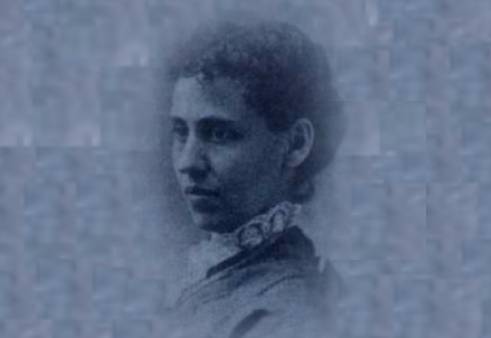
The Emily A. Lee Bequest; The Mother of All Donations
The Woman’s Club’s efforts to organize a public library and to obtain Racine’s first Carnegie grant, and the Junction Advancement Association’s activities in obtaining a second Carnegie grant and opening the junction Branch library, are good examples of how groups of people working together have brought about positive change in our community. But even individual citizens have the power to create significant positive change in their communities.
For example, the expansion of library services to the community has been greatly enhanced by the use of funds donated to the library as gifts, memorials, and bequests
Since then, the Racine Public Library has used Lee funds for many purposes, including: to supplement the book budget, to purchase equipment, to initiate a collection of phonograph records, to sponsor a Great Books Discussion Group, to present film viewing and discussion programs, and to present the Emily A. Lee Lecture Series-a series of free public programs that brought to Racine renowned speakers such as Archibald Macleish and Henry Kissinger.
Besides civic groups and well-to-do individuals like Emily Lee, citizens of average means have also made significant contributions to the library for the various services for which additional support was needed. Innumerable small donations have been made over the years by individuals who wish to remember and honor their loved ones by contributing money toward the purchase of materials for the library’s collections.
Library’s First Official Recording of Reference Statistics
1927 is the first year that reference statistics appeared in the library’s annual report; 4,775 questions were answered. Almost seventy years later, in 1996, the Adult Department responded to 85,044 requests for information, the Children’s Department handled another 33,600, and the Bookmobile 8,198.
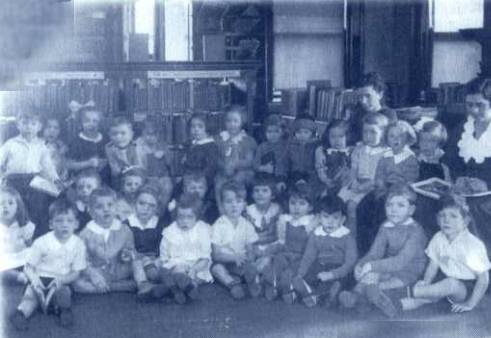
In 1932, the Racine Public Library pioneered its first preschool storytime. Alice Davitt (Schowalter), seated to the right of center, holds Peg Doolin (Martin), top row, fifth from right, on her lap. Story reader Ethel Belden is seated at the far right.
The Racine Public Library’s First Preschool Storytime
In cooperation with the Junior League, the Racine Children’s Theatre, and the Woman’s Club, the Racine Public Library pioneered its first storytime for preschool children from three to five years old. Our first group of 28 preschoolers attended a storytime session, conducted by children’s librarian Alice Davitt (Schowalter), at the Racine Public Library on Feb. 10, 1932, at 11 a.m.
While future documentation revealed that preschool storytimes had been hosted at other libraries as early as 1896, we are proud of our role in the early development of our nation’s storytime programs. A mayoral proclamation honoring Racine Public Library’s national leadership in developing a preschool storytime, signed by the Honorable Stephen F. Olsen, February 8, 1982, indicated that research at the time had disclosed no preschool storytime service anywhere in the country any earlier than the 1940’s, that the Racine Public Library s service had operated continuously without interruption since its origin in 1932, and that it had been accelerated year after year to reach more and more children.
“This library program,” it stated, “has pioneered in the nation as an innovator in reaching preschoolers with pleasurable exposer to books and stories, thus encouraging reading readiness….”
A second mayoral proclamation on the same date noted that Peggy Doolin Martin, who was one of the preschoolers in the first group of children served by this program in 1932, had been involved with the Racine Public Library since 1949 as a librarian and a volunteer in the library’s preschool storytimes. In addition. Peg Doolin Martin, also known as the “Story Lady,” hosted a series of storytimes aired on the local WRJN radio station in the 1950’s and conducted an outreach storytime sponsored by the Friends of the Library in the 1970s. In 1999, after 50 years of storytelling, Mayor James Smith honored her work by declaring July 13 “Peggy D. Martin Day.” Peg Martin, who served the library for 61 years, was present to watch several generations grow up and return to the library with their children and grandchildren. Peg Martin passed away in 2018, but she will always be remembered for her close role with the library — especially with her name on the “Peggy D. Martin Story Room,” one of the library’s primary locations for children’s storytimes to this day.
Note: A previous version of this webpage incorrectly stated that the Racine Public Library held the first preschool storytime in the United States. The United States’ first preschool storytime that we know of today was a story hour at the Pratt Institute free Library, run by Anne Carroll Moore as early as 1896.
In the Grip of the Depression: The Community Stands By its Library
It was 1933, the country was in the grip of the Great Depression, and budgets-including the library’s-were being crunched. To bolster the library’s collections, the Hi-Y and Junior Hi-Y Clubs of Racine organized a campaign called Book Giving Week. They set quotas for books to be collected, and they worked with the public schools to meet them.
In the library archives today is a well-worn and tattered letter of announcement from H.U. Wood, Principal of Franklin School, about Book Giving Week, which was to be celebrated in May, 1933. “Dear Parents” it said. “Did you know that your library in Racine…circulated almost one million books (984,000) in 1932?… Your library has rendered a great service to all Racine in these times of economic depression. We appeal to you now to stand by your library-Your help will cost nothing in dollars and cents, but will mean much to your library.” Principal Wood asked that useable, old books no longer needed be given to the library, and, offering his support of Book Giving Week, Mayor William j. Swoboda proclaimed, “A book in the library is worth ten in the attic,” and books were brought in by the armload. A quota of 5,500 books set in 1933, swelled to over 10,000.
Library Starts Non-Print Collections
In 1942, money from the Lee Fund was used to purchase phonograph records, the library’s first nonprint collection.
In 1946, with the acquisition of 54 films purchased with $1,500 from the Lee Fund, the library began a 16mm film rental service. The library used Lee funds in 1965 to add 8mm silent films to its holdings, and again in 1976, to add Super 8 sound films. With a gift of $5,000 from the Optimist Club, the library began purchasing videocassettes in 1979. In the 1980’s, as demand waned, the library discontinued the 8mm and Super 8 films. Today, although 16mm’films are still used by local schools, they cannot compete with the popularity of videocassettes. As a result, the library is gradually phasing out the 16mm film collection.
In 1969, framed art prints were added to the library materials collection, still another service funded by the Emily A. Lee Fund.
Today, the nonprint collections are part of the library’s materials budget, and they include music cassettes, compact discs, books-on-cassette, videotapes, and educational toys and games.
Library Pioneers Wisconsin’s First Great Books Discussion Group
The Library used Lee funds to begin its Adult Great Books Discussion Group, pioneering the first Great Books program in a public library in Wisconsin. City Librarian Frederick Wezeman wrote in June, 1947; “The Racine Public Library was the first public library in the state of Wisconsin to sponsor, in cooperation with the University of Chicago, a Great Books Discussion Group. This fall [1947] will mark our third year of participation in the Great Books Project….
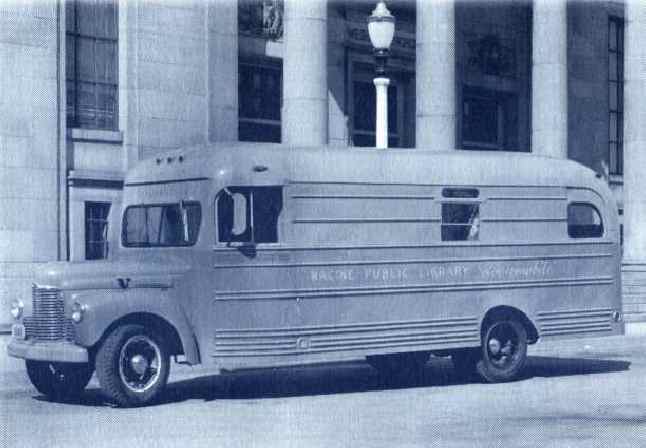
Bookmobile Takes to the Road
In 1948, the library started bookmobile service by converting an old school bus to hold about 2,000 books to transport to four weekly stops outside the city limits, a service intended primarily for county residents. The library replaced this small unit in 1953 with a 27-foot long bus-type bookmobile especially designed to serve as a traveling library. This unit was purchased for $13,000 with funds from the Julia A. Schnetz Memorial Fund. Self-contained with a cab and engine, and an independent lighting and heating system, the new bookmobile had a capacity of at least 3,000 books. In 1968, the city purchased a new tractor-trailer unit to replace the blue bookmobile. This unit was replaced, in turn, in 1991 by a bookmobile purchased with a $100,000 donation from Veronica Regas.
In addition to books, the bookmobile now circulates magazines, puzzles, book/cassette sets, audio tapes and compact discs for children; and magazines, music tapes, compact discs, and books on cassette for adults. Books, however, still comprise the majority of items.

Wisconsin’s First Formal System for Transmitting Interlibrary Loan Requests
A teletype system, known as Racmil, was installed in 1950 to transmit requests to the Milwaukee Public Library to borrow materials not owned by the Racine Public Library. Although the library had been borrowing materials from other libraries on an informal basis, this was the first formal system in Wisconsin for transmitting interlibrary loan requests on a regular schedule. Today, we use computers to transmit interlibrary loan requests to libraries throughout Wisconsin, and often, to libraries in other states. The library’s annual reports for 1925 and 1945 mention that we borrowed 91 books and 251 books, respectively. In 1996, we borrowed 2,104 items for Racine Public Library patrons, and lent 6,232 items to other libraries.
First Public Funding of Library Building in Racine
The growth of its services, the increase in its use by citizens, and the library’s attendant problems with its outmoded facility and outgrown space led to the city council’s approval of the construction of a new central library building. Located at the southeast corner of Seventh and Lake, the building would be paid for with funds from the Library Building Trust Fund, which the council had started in 1949, plus the proceeds from 10-year promissory notes. This would be the first library building in Racine paid for solely with public funds.
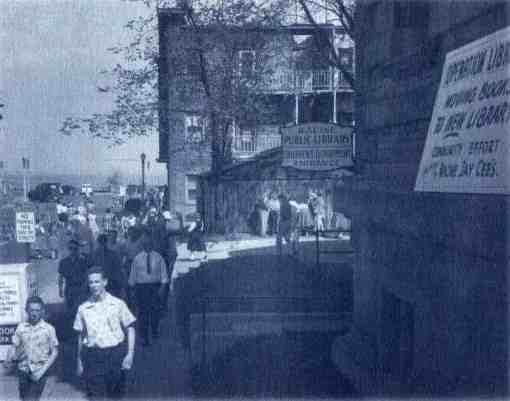
Operation Library:
Citizens Move Their (Library) Tales
Once the new library was completed, books needed to be moved from the old library in the Carnegie building, which had served the public since 1904. The community rose to the occasion and over 2,000 volunteers transferred 75,000 books from the old building to the new one, just one block east, on a pleasant day in May, 1958.
The volunteers, organized by the Racine junior Chamber of Commerce and its auxiliary, carried stacks of books and numbered cards to keep the volumes in proper order. As the volunteers reached the new building, library staff called out numbers, and the books were swiftly reshelved. The community volunteers saved the library the cost of moving, estimated at about $12,000, and the building opened without a hitch on May 18, 1958.
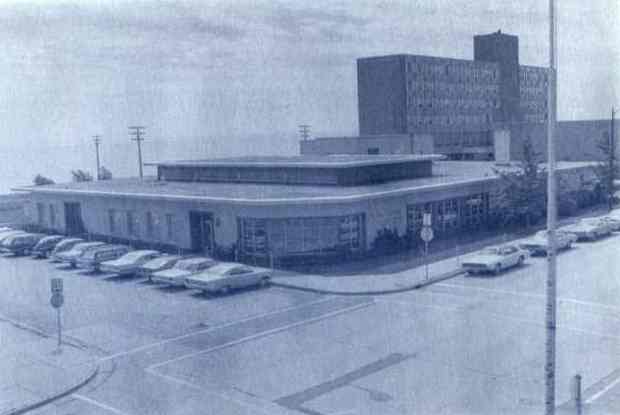
New Library Opens at Seventh and Lake
The new two-story library of more than 32,000 square feet cost $830,000 to build. Constructed of ceramic-faced white brick, the building was accented around its entranceways with blue-green Venetian glass mosaic tile specially chosen to match the colors of nearby Lake Michigan. The figures on the west exterior wall, still visible today, are bas relief sculptures in terra cotta by Hillis Arnold, a noted Midwest sculptor. These works represent manufacturing, agriculture, science, the arts, and family reading. Also on the west wall is a quotation from the writings of Clarence Day, American author and humorist:
“The World of Books Is the Most Remarkable Creation of Man.” A gift from the Woman’s Club, the quotation has been an inspiration for library visitors and passersby.
The central area of the main floor had a high ceiling with natural lighting coming through the clerestory at the top of the building. Large windows on the east side of the library drew visitors to a panoramic view of Lake Michigan.
Library Reaches Out to the Inner City
Established as an informal neighborhood library targeting children six to fourteen years of age, the Book House opened at 1138 Milwaukee Avenue in the summer of 1968. The development of the Book House was a joint effort of Project Breakthru, the AAUW/YWCA Inner City Projects Committee, the Racine Public Library, the johnson Foundation, and Western Publishing Company. The initial start-up funds were provided by the johnson Foundation, but the library provided the funds to expand and maintain the program.
In light of the success of this project, a similar reading room was opened in the Spanish Center in 1969. This room, sponsored by the AAUW/YWCA Inner City Projects Committee, was stocked with books from the library’s former classroom collections. A third reading room was opened in the Southeast Side Center, now the Dr. john Bryant Center, in early 1972. Over the years, these reading rooms were eliminated as cost-saving measures.
1969
Library Installs First Public Photocopy Machine
The first photocopier for public use was provided at the library in 1969. It could make both letter and legal size copies, at a cost of $.10 per copy. Prior to this, the library staff made copies for the public upon request, using a machine in a workroom.
Your Right-to-Read Starts in Early Childhood
A federal Right-to-Read grant provided the funds for the library to purchase 3,500 items for outreach, including picture books for preschoolers, paperbacks for various levels, records, and films. This became what is now the Early Childhood Resource Center (ECRC). This collection continues to provide collections of library materials on long-term loan to Racine area daycare centers, nursery schools, and licensed home daycare providers.
Library Reaches Out to the Elderly
The Racine Model Project on Aging received a federal grant for coordination and extension of programs for the elderly. The library was one of several agencies that shared this money. The library used its funds to provide books, films, recordings and other materials of special interest to the elderly through the main library and at neighborhood drop-in centers and church centers.
Today, large print collections at the main library and the bookmobile are part of the library’s budget. The library still provides deposit collections on a regular basis to nursing homes, and neighborhood and church senior centers.
Library Switches to Computer Cataloging
The library joined a national computer network for sharing cataloging information, known as OCLC (Online Cataloging Library Center). Using terminals linked to the OCLC computer in Ohio, the Technical Services staff could catalog library materials more quickly, and no longer had to type catalog cards, which were now produced by the computer and shipped to the library. Membership in OCLC also provided the means to create a computer database of the library’s collections, which was later used in the library’s automated cataloging and circulation system.
Friends of the Library Group Forms
Federal funding waned during the 1970’s, and mirroring a national trend, the Racine Public Library organized a Friends group. The purpose of the Friends was to support the library by lobbying on the library’s behalf and by raising funds to provide additional financial support for library programs and materials. In 1979, the Friends of the Racine Public Library held its first membership recruitment meeting, and presented its first public event, a “Meet the Authors’ program, which brought fifty authors to the library.
As budgets continued to tighten during the 1980’s, interagency cooperation began to flourish. The library cooperated with local literacy efforts in the community, and with the Racine County Department of Human Services, the City of Racine Department of Parks, Recreation, and Cultural Services, and others.
Library’s First Use of Remote Databases for Reference Service
In 1985, the reference staff began using remote computerized databases to find information when the library first subscribed to a service called Dialog.
1988
Library Building Expansion Campaign Begins
From 1988 through 1990, the library conducted a building expansion fundraising campaign. A committee of community volunteers and library staff raised almost $600,000 over the three year period, $500,000 of which was used for library furnishings, and a remaining $100,000 was invested by the library in a trust fund, earmarked for perpetual maintenance of furnishings and replacement as necessary.
City Approves Library and Renovation Expansion Plan
The city approved plans for the expansion and renovation of the central library building.
1990
Library Begins Computerized Circulation
The library expanded its use of technology by installing a computerized cataloging and circulation system. Initially, there were only a few public access terminals due to space limitations, and the card catalog was retained. In 1991, when the building expansion was completed, the library was able to provide a sufficient number of terminals, and it removed the card catalog. The library had arrived in the computer age,
Today, the computer system includes a magazine index, a dictionary, a reverse dictionary, best-seller and other book lists, and information about new items that are on order. The system also includes TeleCirc, a feature which allows registered borrowers to communicate directly with the computer about circulation matters, such as items checked out, fines, overdues, and holds.
1991
Library Dedicates Newly Expanded and Renovated Building
The library dedicated its newly expanded and renovated building in August, 1991. Construction costs for this 62,500 square foot building were $4,463,000. All library furnishings were purchased through the generosity of private citizens and businesses who contributed to the Library Expansion Fund. The present library is noted for its sweeping lake views. The wide, curving expanses of glass provide a spacious, light- filled interior that seems to merge the blue of lake and sky-an environment suitable for both serious study and pleasure reading.
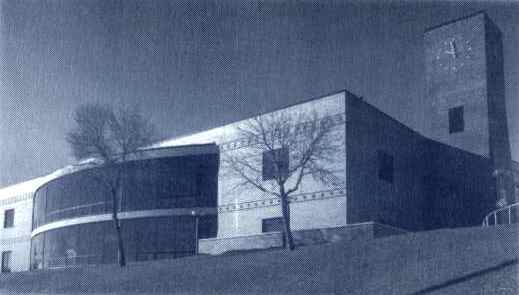
Cruising the Information Superhighway: Internet Becomes a Reference Tool
In 1996, the reference librarians began using the Internet to locate answers to reference questions, and, this year, as the Racine Public Library moves into its second century of service, the library staff is making plans to provide public access to the Internet.
& Beyond – Looking to the Future
In reviewing the events that have taken place over the last 100 years, one may wonder just what has sustained the Racine Public Library and its service for such a long time. Consider the fact that the library’s function is essentially to disseminate records of human intellectual effort, such as books. Consider also the fact that the citizens of Racine established the Racine Public Library, and supported it for 100 years in spite of often difficult times in this area. One must conclude that Racine citizens valued the record of intellectual achievement, and further, that they believed in the benefit of providing an opportunity for all citizens to use such records. The library’s history also shows the professional expertise of the staff of the Racine Public Library in meeting this expectation. We believe it is this combination of public faith and professional response that has sustained the Racine Public Library’s service for 100 years.
Although many things have changed at the library over the last 100 years, the changes have affected primarily the means of delivering service, but have not resulted in a change in the public’s perception of the value of the library to the community. Electronic access to information is currently changing the way library service is delivered. We can only speculate on what new technological developments we may implement some day to provide new and better library services.
A key point of concern at present is the extent to which the rapidly-expanding commercialization of technological resources may limit public access to information. We believe that to ensure an enlightened, democratic society, such limitations must be overcome by a united effort on the part of the general public and library professionals.
As we celebrate the Racine Public Library’s first 100 years of service, then, we celebrate the long-standing partnership between the community and its public library-a partnership that will continue to enhance the quality of life in Racine for a long time to come. Here’s to the next 25, and many more.
Poem by David Kherdian from My Racine
Built by Carnegie to fit our city’s needs, it stood there—as it does today-a solid, square, red brick, two story building on the comer of 7th and Main, just one block up from Monument Square, and within sight of that great lake, that I never failed to look out upon each time I visited that place.
Now, are you ready to explore the future with us?
Incredible people, brilliant innovations and more than a hundred years of dedication to literacy have brought us to where we are today. Will you help us turn the page into our next chapter by making a donation?
I went there first with my mother to the story hour Saturday afternoons, and then for books to take home, until I was old enough to have my own card, searching the shelves with my growing needs, fascinated by the hushed silence of the place, the circular stairs that took me to areas I browsed, standing on the thick glass floors I marveled at.
Downstairs there were books for older readers, along with the newspaper and magazine racks, beside the table where so many sat, who were there to escape the elements and to find in the journals and dailies some hope for their lives, or, barring that, an excuse for their presence in that holy atmosphere, beyond the wind and rain and cold of day.
My library card was free and it would never date, for it was as renewable as my need. It was second in importance only to the streets, where my first education took place, that I would finally give shape and form to because of the learning and knowledge I found within those walls, where the spirit was aided to weld body to mind from a grace that only the printed word could provide.